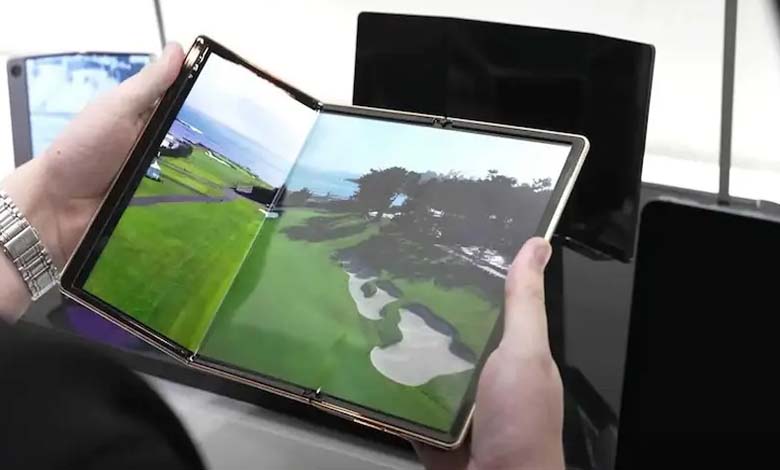Triple-Folding Phones: A Major Breakthrough in the Tablet Market

Triple-folding phones have become more durable and have gained immense traction among tech enthusiasts, whereas they were once considered expensive, fragile, and impractical gadgets.
The concept of a regular phone that unfolds into a small tablet is revolutionary, as it combines the convenience of a smartphone with the large screen space of a tablet.
-
10 iPhone Settings You Should Enable “Immediately” to Protect Your Data
-
Will Smart Glasses Dethrone Mobile Phones?
Tech companies are now working on the next phase of foldable smartphones: triple-folding smartphones. These devices will feature two hinges and three screens, unfolding into an ultra-large display that could reach up to 10 inches.
However, foldable phones face aspect ratio challenges, which may affect video playback filmed in widescreen formats. Users might experience black bars or cropped edges, reducing the viewing experience compared to a traditional widescreen tablet.
-
The Thinnest Model: iPhone 17 Air Expected to Launch Next September
-
New iPhone Features Coming in Early 2025… Discover Them!
Triple-folding phones may also raise durability concerns, as hinges could lose flexibility, leading to noticeable screen creases.
Another downside of foldable phones is battery depletion, as the large screen consumes a lot of power. Consequently, their battery life may not last as long as a traditional tablet.
-
7 Steps to Take Immediately When You Buy a New Android Phone
-
9 Reasons to wait for the iPhone 17 Next Year
Impact on the Tablet Market
Advancements in triple-folding phone technology are progressing rapidly, with several smartphone manufacturers already showcasing concept models. This raises questions about their impact on the current tablet market trends.
Triple-folding smartphones will certainly take some time to gain a foothold. However, once they do, they could gradually integrate into the tablet segment.
This could reduce the need for a separate tablet investment for some users, as they would enjoy the same display quality as premium tablets.












